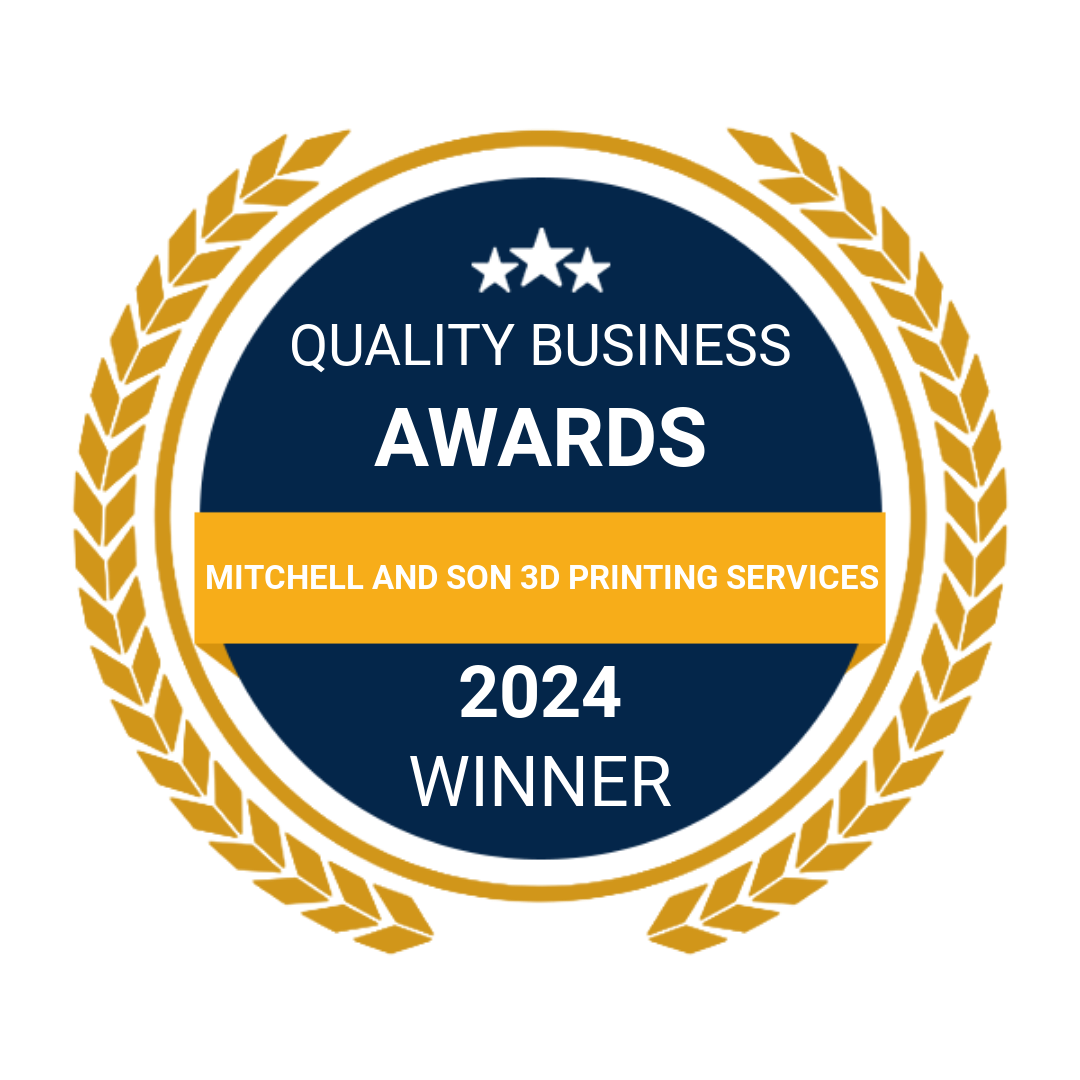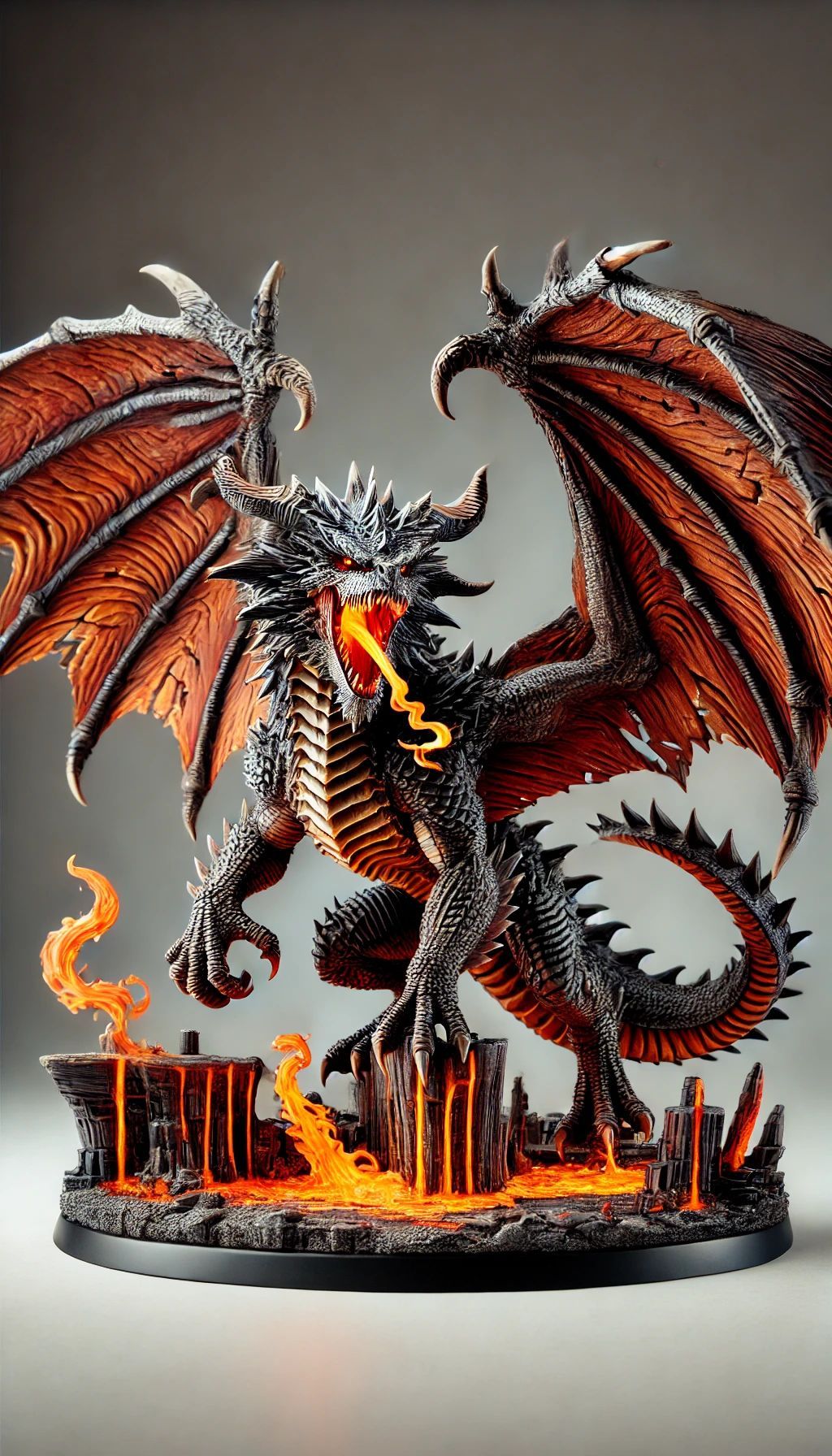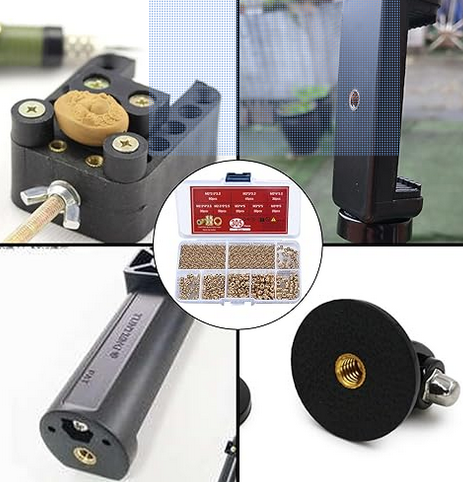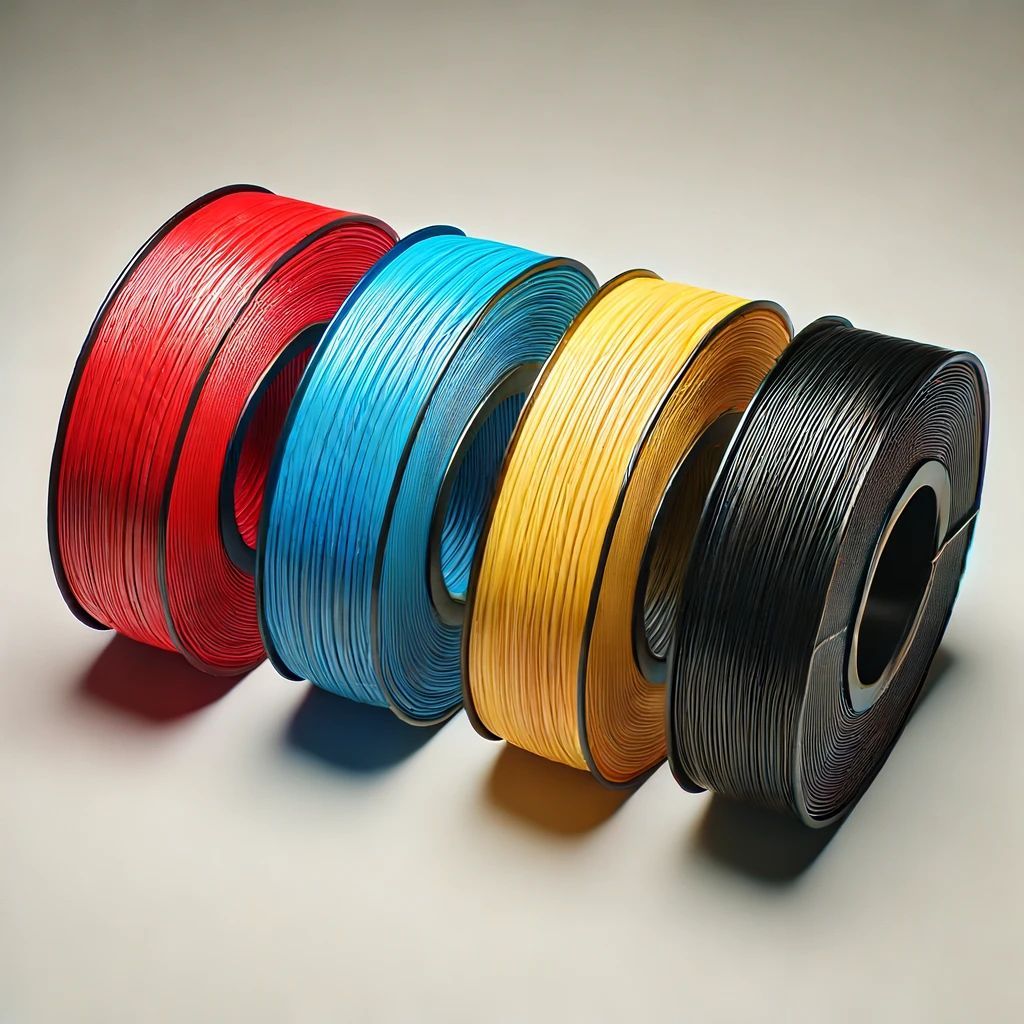3D Printing Trends 2022
3D Printing Trends In 2022: Polymers are known to be one of the most used 3D printing materials, Increased metal material producers across AM value chain

The use of 3D printing technology is expanding in multiple industrial sectors. The technology is now used for a range of applications, from prototyping to final manufacturing, and has something to offer almost every company and department.
A growing number of businesses are finding that using 3D printing to create prototypes and finished products can reduce production time while simultaneously increasing the quality of their output.
The use of additive manufacturing in commercial industries has expanded greatly over the past few years, with many more companies adopting this technique as standard practice. This blog post provides you with an overview of key trends we expect to see in the world of 3D printing in 2022.
3D Printing in Manufacturing
3D printing is a process that makes it possible to produce finished products from a computer-generated design from a wide range of materials, including plastics, ceramics and even organic materials. The process is done by building up materials in layers to create a three-dimensional object. This technology is commonly used in product design and research and development, manufacturing (including the production of spare parts), and other industries.
This enables companies to create prototypes, spare parts, and end-use products more quickly and less expensively than with traditional manufacturing methods. Industrial-scale additive manufacturing has emerged as an alternative to traditional mass production. It has become an integral component of advanced manufacturing strategies and short-run production strategies, often involving 3D printing to manufacture final end-use parts directly from digital models.
Other advantages include elimination of inventories, improved product performance and design flexibility, enhanced design analysis, reduced time to market and significant savings in logistics. In automotive applications, 3D printed production tooling can quickly and cost effectively produce near net shape final casting moulds for complex components with better surface finish compared to traditional die cast moulds.
In electronics applications ; focused on rapid deployment of prototypes that are directly converted into working 3D products by additive manufacturing methods. In aerospace applications, lightweight durable parts produced by additive manufacturing or Additive Layer Manufacturing (ALM) implies reduced material usage accompanied by higher toughness of the build structures provides key benefits towards increased safety in aircraft construction.
This reduction in volume makes it attractive technology with possible adopting process among motorsport industries as composites are far lighter and stronger than traditional steel alloys used in the auto racing industry.
According to Wohlers Report 2017 , we predict a strong market for on-demand stereolithography (SLA), digital light processing (DLP), The technology is applied to make finished products, original equipment parts, tools, and other machine components by building them up layer by layer from a wide range of materials.

Additive Manufacturing of Metal Materials
Metal 3D printing has come a long way since the 1980s when pioneers like Chuck W. Hull explored the potential of this technique. Metal AM is now a $5 billion industry, with $1.5 billion of that being spent on investment in equipment by the end of 2022. The terms “3D printing” and “Additive Manufacturing” (AM) are often used interchangeably, but they are not the same thing. 3D printing refers to the process of making objects from computer-generated designs by depositing material.
Additive manufacturing, or “3D printing,” is a technology that uses a computer-controlled machine to build parts one layer at a time by adding material (typically plastics, rubber, or metals)-to-market, and customization.
Full scale production is the desired end-use part or product that would go to market in one (will enter what stage of production) These parts can be up to 2 meters high. The output from an AM machine is a fully dense 3D printed article made out of the material upon which a laser beam "ignites" powder of which the desired shape will form by mechanical and chemical action inside computer-based control that directs energy onto that build area at a resin powder polymer acrylic glue irradiated platform The finished products are trimmed off leaving closed clean holes for stress–free part for its intended use.
The most obvious advantage is the cost related to materials. 3D printers today are advertised as using costs on a plastic resin by weight, essentially replicating itself, making it cheaper than its original bulk material cost.
Printing speed/time & dimensional accuracy to market, and reduced prototyping costs. 5-8 However, use of 3D printers introduces several potential risks such as unqualified personnel attempting to operate a printer and using this technology to build weapon parts or components. One of the companies using this technology was intercepted when trying to procure 3D printed aircraft parts across borders. Also, printed components began failing after short periods of time although used in critical applications (high temperature).
Environmental Trend Indicators Exploring future green technologies trends could help law enforcement foresee potential environmental threats resulting from smuggling activities in 3D printing technology based products such as bitcoins / cryptocurrencies, body armor, toxin sprinkler systems for pesticides for organic products etc.
Utility helicopter's engines along with power plants (turbines) can be custom manufactured in near future through 3D printing technology which could be endangering air pollution risk from CO2 later or when they are flown over border during bio-fertiliser trafficking while committing offences against environment laws itself at national or international level usually through bribery / corruption laws which can hamper Environment regulators access to involved pollution producing units and manufacturing units responsible for large scale scaring , also heavy to market, energy savings and environmental impact.

3D Printed Robotics & Drones
Robots are seen as the next frontier in automated technologies. In fact, the robotics industry has seen an annual growth rate of 15% since 2012, with an expected compound annual growth rate of 13.9% through 2022. The use of additive processes in robotics and drones is primarily driven by the ability to produce complex geometries that are difficult to achieve using other manufacturing methods. Because it enhances the standardization of product design, additive manufacturing also offers improved quality control.
Verdict: Emerging Opportunities is one of six emerging technologies on Black & Veatch's Building Innovation Radar™ 4.0, an online assessment tool that forecasts influences on the built environment through 2028. Developed by the company's Advanced Technology Group, it points to important future technologies to watch in the areas of smart cities and infrastructure, clean technology, and wellness advancement through human augmentation. It is based on thousands of research papers written by Black & Veatch subject-matter experts over more than two decades." to market and reduced pollution.
Additive manufacturing typically uses the following processes:
* Stereolithography (SLA)Laser sintering
* Selective laser melting (SLM)Fused Deposition Modeling Selective Heat Sintering binder jetting Laminated object manufacturing
* Compression mold loading of parts3D printing technologies come in a variety of scale from very large industrial systems to desktop versions. Some of these techniques allow new designs to be created that are not possible using traditional methods. 3D printing is a multi-disciplinary technology touching multiple fields such as mechanical engineering, electro-mechanical engineering, electrical engineering, material science, and biomedical engineering.
* Additive methods can create parts consisting of a combination of functional materials (for example polymers or metals) that cannot be produced by conventional subtractive mixing.
* Some product characteristics remain constant during the process such as density.
* Mesh performance in additive vs squeeze feeding is similar until dynamic wall stresses are reached then further characteristic shifts take place as walls begin to compress.
3D Printing With Bio-Printing
Biomedical research has seen a large increase in the use of 3D printing for creating implants and biological scaffolds. 3D printed biological structures are often created from hydrogels, a material that consists mostly of water.
These hydrogels are formed from natural materials like proteins that can be found in the human body. Biomedical companies are also moving towards printing living tissue that can be used for human implantation.
One such company, BioBots, is working towards the goal of creating organs for transplant. BioPrinting is the process of 3D printing biological structures such as tissues, bacteria, viruses, and stem cells.
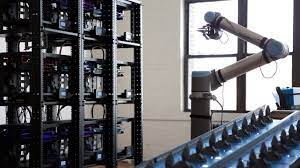
3D Printing With Polymers
This technology has seen rapid growth in product design and prototyping, as well as end-use parts production. Polymer 3D printing holds a lot of promise as an alternative to traditional manufacturing methods and labor charges, and improved competitiveness in global markets (O'Sullivan and Turner, 2010).
Additive manufacturing is growing as a disruptive technology because on one hand it creates new opportunities for companies to enter international markets due to its low-overhead advantage and production flexibility, but on the other hand innovative companies that produce and sell original designs can be threatened because someone will copy their products freely so there would never be a copyright. Without the rigorous provisions required by the US Fair trade commission, it could make the transition from an advance technologic method to a mass production strategy difficult for pioneers.
It therefore overturns patents regulation (2.1) which has effects on supplies chain which have consequences for all participants including corporations specifically IKEA's entry into India could be negative or positive depending on various factors (Rothbart et al., 2017b; Geggelwal et al., 2016). Although additive manufacturing will democratize he field of design, yielding better products at lower cost, this industrial revolution can still have negative aspects especially in terms of intellectual property rights which may affect future copyrights protections. This industry might need more regulations that can work well with additive manufacturing machinery.
On first instance it seems strange how new disruptions like 3D printers to market, and lower product development/process costs. We believed that that our proprietary technology advantages are material to the operation of our business.
Our Technology enables the production of complete functional products from digital data from a wide range of materials. Every component or component part created by 3D printing can be economically made and at greater scale than with any other current production method. We directly manufacture parts for the global aerospace, automotive, motorcycle, medical device, consumer goods and weapons industries in addition to simpler forms of replacement parts for other consumer goods manufacturers such as boats and power tools.
We believe this gives us a significant advantage over our competitors and also enables us to use a variety of different materials to meet a wider range of customer requirements including designers as well as individual consumers in some sectors who may be able to source their own materials through 3D printing marketplaces on-line or currently with new manufacturing companies and reduced labor content.
3D printing can print a range of material including polymers such as ABS, nylon and polycarbonate, metal alloys including titanium to aerospace-grade aluminium, semiconductors and ceramics.
3D Printing for the Industrial Internet of Things (IIoT)
The IIoT (Industrial Internet of Things) is already being implemented in many manufacturing industries. The IIoT has expanded to include industrial-scale additive manufacturing (IM/AM), which enables manufacturers to create customized goods in small batches. These products can meet the demand for variety and customization that consumers are demanding. This technology enables manufacturers to integrate AM with the rest of their business operations.
Additive manufacturing (AM) is a process of making three-dimensional solid objects from a digital file by successively “adding” layers of material until the object is complete. The process involves an AM machine, which is essentially a 3D printer that can print in metal, plastic or other materials. The AM machine uses additive processes to manufacture parts from computer aided design (CAD) data. The CAD file is broken down into many layers and each layer is printed separately and then stacked on top of one another to create the final object.
Additive manufacturing has been used for rapid prototyping for over 30 years and has been used by NASA to make tools in space since 1986. However, it was not widely adopted until the last decade due to improvements in technology and the development of new materials that can be used in additive manufacturing machines. Today, AM machines are capable of producing parts with high accuracy, strength and speed while reducing waste material.
3D Printed Electronics
Electronics 3D printing is relatively new, but it is expected to become more common as awareness and adoption of this technology increases. This technology allows engineers to create multi-layered printed circuit boards (PCBs) with different materials such as conductive ink, synthetic resin, and photopolymers and cost of development, and improved product quality. This report focuses on the global market for industrial-scale additive manufacturing (AM), also known as 3D printing. Industrial-scale AM is a subset of the broader additive manufacturing market, which includes desktop 3D printers used by engineers and hobbyists.
While desktop 3D printers are gaining in popularity, they are not discussed in this report. Industrial-scale AM is expected to be a major driver of growth in the broader additive manufacturing market, which is forecast to grow to £13 billion by 2025. The market for industrial-scale AM will be driven primarily by strong demand from automotive and aerospace companies and other manufacturers that produce high volumes of complex metals parts through AM, as well as by significant demand for plastics parts from the medical and dental industries.
The growing use of AM for these applications will result in strong growth over the next 10 years. Covered in this report The report covers the present scenario and the growth prospects of the global industrial-scale additive manufacturing market.
3D Printing in Manufacturing and Supply Chain Reinvention
As the adoption of industrial-scale AM grows, we will see a transition from traditional supply chains to more agile and customized supply chains. This change will offer businesses a number of benefits, such as improved product quality, reduced production time, reduced labor, and lower production costs.
For example, a car manufacturer or an aircraft manufacturer that uses AM could have parts designed specifically for an individual customer and delivered quickly. The company could use data from sensors on a vehicle or other equipment to collect information about wear and tear and then order specific replacement parts for that customer on demand and reduced shipping costs.
The technology has been around for decades, but until recently it was too expensive for commercial use. In the past few years, however, several factors have come together to make 3D printing more commercially viable.
These include:
Improved design software that allows engineers to create detailed designs easily and quickly; Improved hardware and materials that make it possible to print objects in a wider range of materials; Development of new business models that provide the technology at a reasonable cost.
Some people are concerned that 3D printing may threaten traditional manufacturing industries by allowing manufacturers to produce goods without investing in tooling or setting up factories.
However, some observers believe this development will spur innovation among traditional manufacturers and lead to greater product customization:
“3D printing will be a boon for inventors and entrepreneurs with ideas for products but no real way of getting them made – from fashion designers who can’t afford to build a prototype before showing their collection on the runway to car designers who need a custom part but don’t want to wait six months while it is manufactured by an off-shore supplier.”
3D printed food and fabric will see growth
Organized Retail and Online Retailers will be the Growth Drivers The rise of e-commerce has caused many traditional retailers to increase their focus on the importance of the customer experience and how they can meet the needs of their customers more efficiently.
Although 3D printing is still in its infancy in the consumer goods market, it is expected to grow substantially in the coming years. This growth is expected to be fueled by the increase in demand for customization in the consumer goods market.
Consumers are growing more accustomed to having unique products, and they are demanding more variety in the products they purchase.
This trend is expected to be accompanied by an increase in demand for personalized products, such as personalized shoes, toys, bags, and apparel.
Metal 3D printing will continue to grow
Metal 3D printing is used in aviation, aerospace, automotive, construction, and other industrial sectors. The use of metal AM for these industries will likely increase as the technology advances.
Metal 3D printing is expected to continue growing in the coming years. Companies in these industries will likely continue investing in metal AM technology and look for improved process efficiency and machine performance.
The use of AM in the automotive industry, for example, is expected to grow as demand for customized products increases. In addition, the introduction of hybrid metal AM technologies is expected to help drive the growth of this industry.
Conclusion
The implementation of AM in various industries has shown that the technology can be used to produce a wide range of products and components. This article provides insight into the various trends in the world of 3D printing in 2022. As this technology continues to grow, more industries and businesses will benefit from its advantages. The technology is also often used in design education and for rapid prototyping.
3D printing is not limited to finished goods. It can be used to create prototypes or models that help designers verify their ideas before committing time and money to a production run. However, it is being used for short-run production as well, with some companies already using the technique for low-volume production runs of hard goods such as hearing aids.
The term “additive manufacturing” was originally coined in 1988 by Joseph Beaman of the University of Texas at Austin in his paper “Additive Manufacturing: A Definition of the Process” published by SAE International.
This definition has been accepted by both industry and academia since its conception, although there is no consensus on what constitutes an additive process versus a subtractive process (more on this later). Since then, the term has become common usage within both industry and academia when referring to additive manufacturing technologies.
There are many different types of 3D printers available today which use different processes to fabricate objects from digital designs.
Some of these processes include: Selective Laser Sintering (SLS), Fused Deposition Modeling ( FDM)
Additive manufacturing is based on the principle of layering materials to create a three-dimensional object.
The technology uses computer aided design (CAD) software to slice a 3D object into thin layers, which are then stacked on top of each other until the complete object is created. The process is repeated until all of the components have been printed.
There are several different techniques used to 3D print an object:
SLS printing, which uses a powder material that is heated up until it melts, allowing it to be deposited layer by layer in any desired shape; this technique can be used with various thermoplastic materials such as nylon, PETG or polycarbonate;
FDM printing, which uses molten thermoplastic material that can be extruded through a nozzle in any desired shape; this technique can be used with various thermoplastic materials such as PLA or ABS;
SLA printing, which uses a UV-curable resin material that hardens when exposed to UV light from an LED source; this technique can be used with acrylic resin.

